On a recent visit to Hawke’s Bay I wanted to visit Clearview as I admire their wines immensely, and had visited the Cellar Door before, but only as a tourist. I thought to ask to meet winemaker Mathew Kirby as we had a connection already through his Helio project… but as it should, probably, I was invited to meet with owner/founder Tim Turvey himself.
Tim is known in the industry as a ‘character’ – and one of the great wine people of New Zealand. What I also found over a couple of hours is that he’s immensely engaging, honest, gracious, and, notably, not a bragger. He seems quite humble about what, in the course of one generation, he has developed here at Clearview. Generous to a fault – during my visit he participated in multiple, overlapping conversations with visitors and colleagues – giving everyone a bit of banter and a slice of his time.
Winefolio: Do you grow a bit of everything here – I see Semillon, Gewurz…
Tim Turvey: Well the Pinot is from Martinborough but we have a fair input into how it’s grown.
WF: I just tried Gordon Russell’s new Chenin Blanc – that’s pretty good.
TT: He’s done it before, in the great vintages – 09 and 13 I think? It’s from a new organic vineyard isn’t it? We have wines that we can cellar comfortably with even the Gewurz for ten years and they just get big and fat and oily and rich. You can see how they’re going to go. I just planted the Riesling directly in front here in straight 1A shingle – there’s nothing harder in Hawke’s Bay than 1A!
Mat’s done quite a bit of work in the Clare Valley – that’s where I met him, because my daughter was at Kilkaloon for five or six years and so I fell in love with those massive dry Rieslings.
On the strength of that planted that piddly little bit there. It’s often confused with the Muller-Thurgau’s and perhaps riesling’s thought of like that. I don’t know about now – I think we’re becoming educated about that now. I can always sell it to other winemakers and restaurateurs!
I’d like to think we’re educated about it. From an early age I was travelling the world and my parents were in their 40s when they had me, an only child, and they travelled extensively and there was wine on the table all my life. That was unusual back then – but for me it wasn’t. My father’s favourite country was Spain and he would bring a lot of wine in from Spain. It was always the big reds.
WF: It’s a different culture around wine in Europe isn’t it?
TT: People would ask me “what do you think I should have to drink with this meal?” And the answer is ‘well what’s your favourite wine?” And they’ll say some massive Barossa red…and they’ve got some light fish or something! And then I’ll say “and what else..?” and eventually I’ll say ‘do you like Chardonnay?” “Oh yes, love chardonnay” and Boom! You’ve got them.
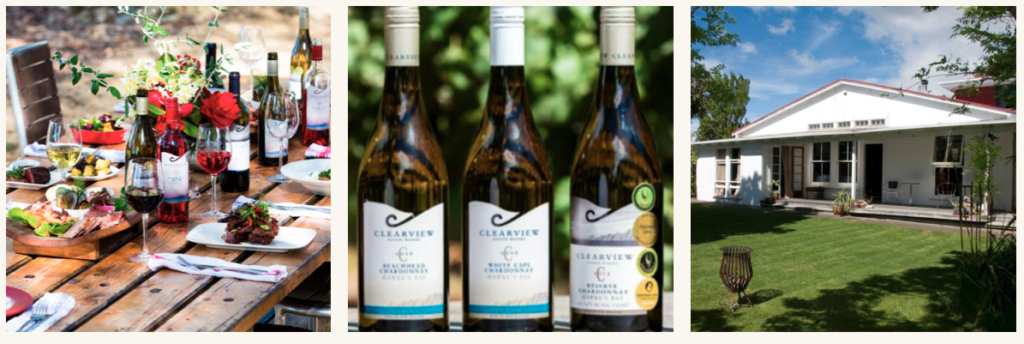
I met this woman who spent four years doing a Masters thesis on Food and Wine matching, and I expected that when she came to New Zealand, I expected a four hour dissertation. And she said ‘I can tell you in three minutes…If you like the food and you like the wine – both will be enhanced. And if you don’t like the wine but like the food – and every other way around. We blind taste tested 1000 people and it wasn’t about the wine and food together, it was the personal preference of that person to the wine and the food.’ It was a revelation to me, and it made a huge amount of sense. You can be really complex about things. If you want the Barossa red and you want the chicken or the fish, you’re going to be happy.
TT: (presenting the new Coastal Riesling) Have a guess on the RS on that?
WF: Well, I can go quite sweet, quite happily. I took something pretty decent to a do once, but it had a fair bit of sweetness, and left it on the table. Later I hear from across the room “Who brought this crap?’ Hahaha. I’m going to go 11?
TT: It’s about 20-odd par. Now (pours the Haumoana Riesling) we’re going to double the sugar level. Some acid, around 8.5 – not out of control. Really got a bit of weight now. No rot in this at all – this is 2020. About a month ago and already in bottle.
WF: How did the COVID harvest go for you?
TT: Awesome. Of course in the old days we used to have pickers who were 70 year olds who’d come out of the woodwork in Te Awanga and that. Now we ring one man up and he asks us how many we want. And the Thais are the best workers. So we had 35 Thais who were all in the same bubble. One phone call and they’d all turn up and they’re so quick. Hand picking was great and then the machine picking – the machines are unbelievable these days… Colour sorting too.
WF: Is there still a certain amount of hands-on from you? Calling the shots obviously?
TT: Personally? I’ve gone from the winery to being more in the vineyard now. Because we’ve got Matt and Rob, and there’s only a certain amount you can do. I appear to be the only one with a heavy truck and trailer licence! It’s a really great collaboration really.
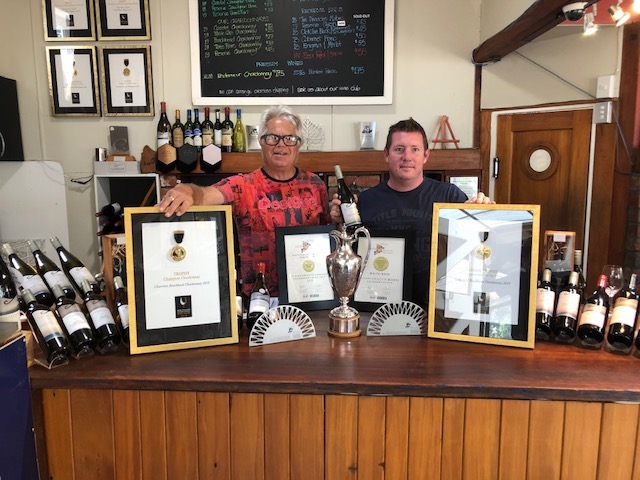
I suppose at the end of the day I make the decision on the harvest day. I look after all the vineyards, so I make every decision on the vineyard. Harvest is about Winery and vineyard so we work really closely. And I’m not a control freak so I like to let everyone have a go and they’re a darn sight younger and smarter than I am. What are we doing now? We were obsessed with berry counts and optical sorting and what have we got now? We’re always experimental – got whole bunches being thrown in and..
WF: (interrupts) …what are your thoughts on that?
TT: We do a lot of it – with the Pinot and the Syrah. Maybe 10, 20, 30 per cent – we’re always experimenting. And the reserve Syrah has a lot of whole bunch. It adds more complexity, weight and mouthfeel – it must be dry and ripe.
WF: I respect that even the great brands, like yourselves, Trinity Hill and so on are still pushing the boundaries. You could be sitting back and just pushing out the wines that you’re known for, with your eyes closed. But it’s great to see the innovation.
TT: It’s good when you get someone new in as well. Like a new housekeeper – a new broom sweeps clean. It’s been really refreshing for us to have Matt and Rob on board. They’re quite opposite to me – I can be a bit of a loose unit. They’re both quite tight when it comes to the winemaking, although Matt’s like me in some areas – in the artistic and experimental way. And Rob’s our T-crossing one – it’s very complementary.
And it’s also about running a business. So you look at it, and you’re completely entrenched in everything that you’ve done for 35 years. They ask “why are you making so much of this wine? It tastes amazing and it’s $100 a bottle, but you only sell a little bit. But this one here always sells out although it’s only $20 a bottle.” It takes us a little while to figure things out sometimes. Matt has been really good at that for us.
This is one of the first wines we ever made…it’s a barrel fermented Sauvignon Blanc. Because of course we can’t do Marlborough Sauvignon Blanc, so we do a French style. ‘19 was a great vintage of course.
WF: Whereabouts is the vineyard for that?
TT: Here, out the back. The predominance of that is at the back of the property. I drink that at about 8-10 years of age and it’s delicious. Fat and full and the green grass notes have gone but it’s just into this rich variety. I think Cameron Douglas gave it 94 points out of a hundred.
WF: It’s got a beautiful salinity to it – what does that come from? Is it the soils?
TT: We’ve done saline and salt tests on the soils here. And there isn’t any – because it’s so free draining, it appears there’s nothing in there. So all we can do is harvest it – it’s half hand picked and half machine. And squeeze it and ferment it for heaven’s sake. Fully barrel fermented – either wild or inoculated yeast, usually before Christmas or just after, but we have left it in barrel for two years.
I personally like oak, and of course there’s a movement away into so-called ‘integrated’. I think time is the better integrator than pulling it out early. So I’m a big oak boy. I’ve a wine for three and a half years in a hundred percent new French oak – I have a little label of my own called ‘Topsy Turvey’ with my daughter and I and I can give you a little taste of that if you like.
Semillon – I love it. It’s a variety that I really like and we barrel ferment this as well. We only put it out in the great years, otherwise it goes into the rosé as an addition. We’ve made that much good wine in ’18, ’19 and ‘20 – bring on global warming! 2017 was marginal but apart from that, right back, we’ve had a golden run. Again, the Semillon is just a screamer after ten years. It adds to its oyster shell and pithiness – I love it.
I’ve got the 2019s to show you as well – this is the Three Rows. We only do 1000 bottles of it – three barrels. It’s all about reductivity. The French say “it’s in the terroir” (puts on a very good French accent) “you get two stones and you grind them together and get the sulphide thing”. Well what a load of bull. It’s yeast under stress – there’s a number of ways you can do it. And of course it does well – Villa, Vidal, Esk with all their awards.
WF: It is popular. It’s almost considered the ‘modern style’ isn’t it?
TT: A lot of those great Montrachets are yeast under stress. They’re either too hot, too cold. Or a vineyard where the fruit doesn’t have a lot of mineral or vitamins in it. I love the texturals of this because of it. So what it is, is a slightly hotter ferment, high solids.
WF: This would be popular in my local shop – First Glass.
TT: Oh yes, Kingsley. Well, we are the Chardonnay specialists! Let’s work through those three Chardonnays. So, this is the Reserve 2018. It’s interesting – the ’17 had a little more of the reductivity in it because we did some higher temperature ferments which does put the yeast under stress!
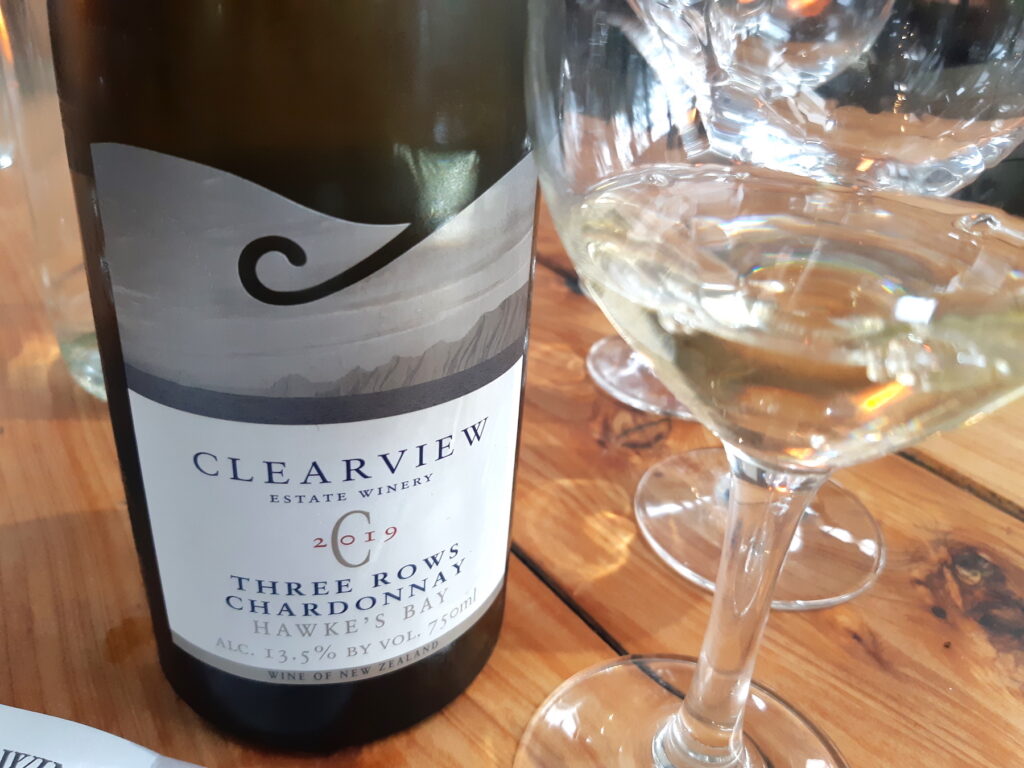
And everyone’s like “oh you’ve gone over to the dark side”
WF: Very polished wine though – the Reserve. I love that oatmeal biscuit character you get in the middle of that. Absolute classic.
TT: We’ll go for this Whitecaps Chardonnay, because this is me going back to the ‘80s. We’ve been working on this for about eight years now. And Matt got a handle on it pretty quickly. Massive oak. People wanted it. Those limey, lemony acidic Chardonnays with no oak. We’re boomers mate, and we’ve got the money and we know what we like! And we want that style. Can you see what we’re dong here – second pressing, softer oak. It drinks really well after five years. I can pull one out – lots of oak, lots of everything. And it’s still got length, because you know it’s about having good fruit as well. Chardonnay is the white wine for the red wine drinker. Just got power and a bit of everything.
This is the Endeavour. Still New Zealand’s most expensive white wine, I believe. We retail it at generally around $200.
WF: Is there a reason for the price, other than you just think it deserves it? Is it reflective of the trouble you’ve gone to making it?
TT: Of course. We’ve been doing it for twenty years, and we’ve made seven or eight in that time?
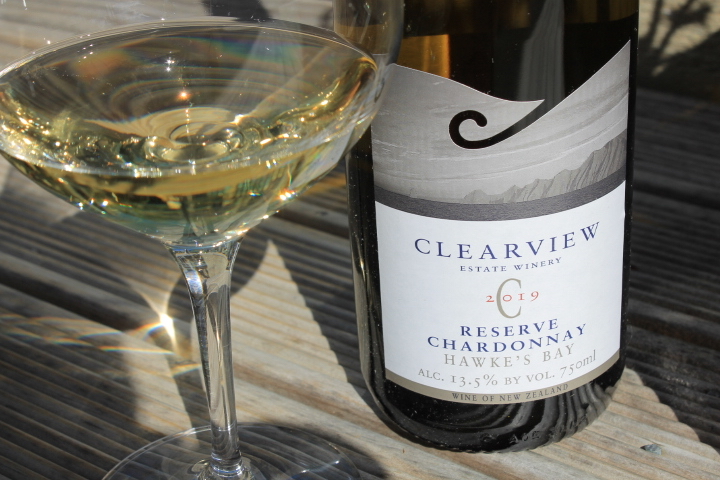
WF: it’s a bit like Art. Art is art if you say it is. If you give it a fancy name, put it in a frame and put it on the wall, then it’s Art.
TT: Let me tell you how it’s made. It’s two rows of the oldest vineyard on the property, and it has to be an amazing vintage. Those two rows we thin down to about seven bunches on the vine instead of 18-20 in our Reserve Chardonnay.
The rows are the gnarliest, right in the middle of the property. It’s the first 300 litres out of the press of those two rows and it’s only around a thousand bottles. It used to be three years in 100% new French oak, and now it’s down to two and bigger 500-litre barrels, not the 225s. We entered it into the Fine Wines of New Zealand, and Boom, straight in.
WF: So you’re still fine tuning it as you go?
TT: Well it’s also Mat coming on board, with a little less oak. I’m going to give you one of my Topsy Turveys that has out of control oak!! And it’s a wine to look at in five years time, that will last twenty. And for me, it’s not about paring back the oak, it’s about adding the oak and giving it time. That’s just me – sorry Team!!
WF: There’s no point in bolting something on and not having a plan for it – a context. Like whole bunch. You either know what you want for it, or it can just spoil your wine.
TT: All of this is hand picked and straight to press, and it’s either, it depends on where the vineyard is… it’s very burgundian. The higher site is the best and the lower stuff is the village.
WF: So your two rows for Endeavour is like your Grand Cru?
TT; Yeah, absolutely. Hand picked at 25 brix and out of the press is an acid of ten or eleven, Fully barrel fermented, and all gone through full malolactic, but still got the really impressive acid base to it.
WF: Beautiful wines. That chardonnay line up is just first class isn’t it?
TT: (smiles) and we’re just about to bottle our sticky, that’s been two years in the barrel. The first one was in 1989/90 and we called it Noble 51 – it was 51 brix. De Bortoli gave me a couple of shots across the bow because of their Noble One, but they allowed me to do it.
How about some reds? This is our Pinot Noir, from Martinborough. It’s all Abel clone, it’s my favourite clone. So Larry used to give us a couple of tonne off his favourite block. So I made that first tri-regional Pinot in 2006 I think it was. We all used to travel together, so a third from Pegasus Bay, third from Peregrine and a third from Larry. And often they would come and arrive together, and I’d get them to crush and de-stem it up there and into pelocons. Martinborough’s just a got a bit more grunt you know? A bit more interest.
WF: I thought it was important to come down to Hawke’s Bay now. Not just because of what’s happened with COVID, but also so that I can hear the stories, and then do the writing ready for people to read the travel down here in Spring and Summer.
(We are joined briefly by National Sales Manager extraordinaire, Lisa Clarke)
TT: Well we’ve got time now. We’re all sort of post vintage. We all get fired up over Vintage and then at the end of it it’s almost like your reason for living has gone.
WF: When I said I was coming now, a couple of people said to me “Hawke’s Bay – middle of winter?” but I think it’s important to come, because everything that we’ve all been through.. it’s been stressful. So if I write the stories now, people can have something to look forward to for the end of the year.
Lisa Clarke: For me, getting back on the road and seeing our restaurants doing OK has been really heartfelt for me, because some of those people I’ve known ten years, and Tim’s known much longer. They become part of you.
WF: I was in Havelock North and I heard that you can’t get a table at the restaurants there. And when I was in Sileni for a tasting, eight couples walked in behind me, and Eliza’s there juggling bottles, tables.. she’s an absolute dynamo! And the wines are quite good again there now.
LC: I met her in Blenheim at a Cellar Door, and when she moved here she had my card and we’d kept in touch. She asked about a job here, but we already have a dynamo..
WF: It’s weird with a few changes going on, but I do feel that we’re in the midst of an exciting phase with New Zealand wines. Syrah is coming along really well, and I think chardonnay could be the next big thing for us.
TT: We have six chardonnays, and two stickies, and there’s a market for them all.
WF: It’s like at my local wine shop – First Glass. Both of the guys there are out on the floor, talking to customers and listening to what people are saying – and the word is that Chardonnay, in all it’s styles, is what people want. Kingley’s like an influencer for Boomers. If he was 25 he’d be on Social media now as our top “influencer”. Your wines are really popular with the audience there.
LC: Have you met Michelle, our Auckland Rep? She’s got a real buzz, and we’ve got room to grow there. And the last year or two have been really successful.
TT: What we’ve got with Michelle is someone with the energy to go into restaurants because that takes a lot. Previously it was ‘where can we dump a pallet here and a pallet there’ and not do the hard yards.
JC: And she’s working hard – in Fine Wine today doing all the tastings and back in tomorrow.
TT: And they’re very loyal to us you know, because when they went bankrupt we were the only people that said ‘don’t worry about payment we know you’ll see us right.. and come and stay out here for a couple of weeks’ Because they’re not arseholes, they’re not going bankrupt because they want to. It’s a family business and they’re hard working – all the things that we are.
At this point we decant ourselves out to Tim’s place and he insists that I partake of his ‘pet project’ Topsy Turvey.
TT: That’s the red (shows me the bottle) and that’s what you’re drinking… 2018 Topsy Turvey Chardonnay.
WF: 40 years in the planning.
TT: I was making wine when I was ten, at Boarding School. Can you believe that? And Katie’s been making wine – well she was at Lincoln, and then travelling and working down South and all over the world. The label’s quite hard to read… I’m a red boy unfortunately and she’s saying ‘Oh Dad, the label is so boring..”
WF: Stylish though, and no, not boring at all. Things that you have to work at a little bit are more memorable. I’ve seen a lot weirder stuff than that.
TT: So, this is off a vineyard at Clearview that she and I own. Beside Clearview, there’s twenty acres there. She planted this fourteen years ago, and we’ve always wanted to make wine together. And now we do. And we’re not planning on making vast sums of money out of it. We get good money for the wine, but it’s more about the fact that there’s two or three barrels of wine for our favourite restaurants in New Zealand, and we sell everything to them, only. I’m still selling 2014 Cab Merlot Franc which I’m about to open for you now. << cork pops out >>
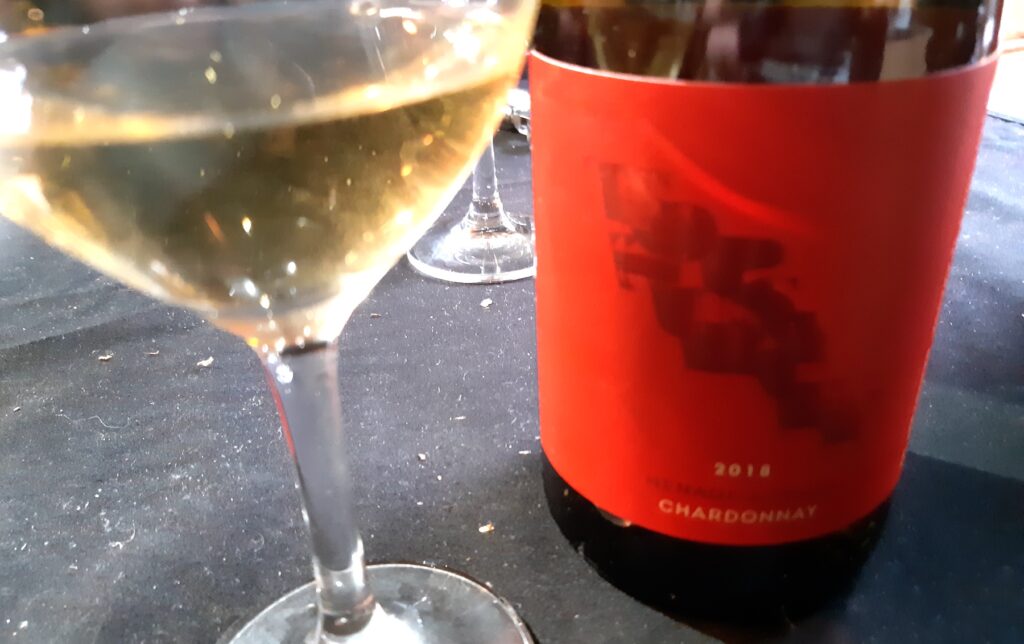
WF: is this Chardonnay the one you said was going to be massively oaked?
TT: Two and a bit years in a hundred percent new French oak.
WF: Not out of balance though. I mean good wine eats oak doesn’t it?
TT: Oh thank you for saying that. I mean I’m looking at the 2019 now which is still in barrel at a year and a half, and I’m thinking ‘Oh God, is it too much?’
WF: No, when you said about it, I was expecting to be really slapped in the face with it. It’s there, but it’s part of the wine! It’s viscous and gorgeous. Unctuous is the word for this. It’s got an amazing mineral, savoury note to the finish.
TT: Crayfish, that’s the thing for this. Crayfish Mornay – do people still make that? It has three soil types in that vineyard. 1A shingle, and as those layers go down to about a metre, there is also a lot of shell and silica clay pan. Then that gets thicker – up to about 200mm thicker, but we’ve broken it all up with this big digger and then planted it up. It’s pretty cool that Katie and I actually planted this vineyard and still manage after four wives to hang on to it!
WF: Good on you! Yes, that’s a really smart wine. I was intrigued because you said “I’m going to show you this..” and I was thinking: OK – I might not like it. And it’s my thing that I’ll say if I don’t like it… and then where does that leave us!! <laughs>
TT: It’s a style I love. And Katie loves that style as well.
WF: When you say ‘style’ – what do you mean?
TT: Big, fat, rich. Super ripe so it’s into ripe tropical. What I find with Chardonnay is that as it ripens it goes from the cut grass herbaceous through to the stonefruit; then it starts to get into the things you grow in the tropics. Melons, passionfruit and then pineapples at the end. I want that – I don’t want mowing out of the lawnmower. And I don’t want acid. It worries me the way it’s so easy to do these limey-lemony acidic Chardonnays.
WF: I’ll say one thing – this is lovely!
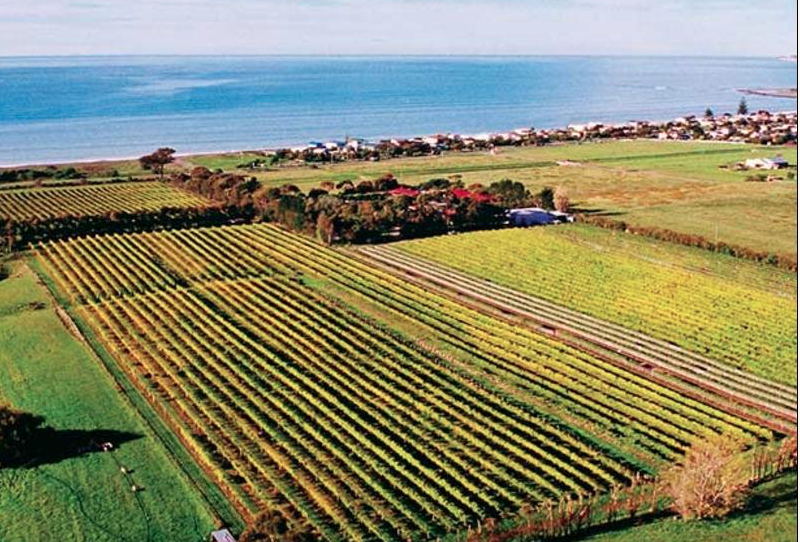
TT: (Pours the Topsy Turvey Red) This is three and half years and a hundred percent new French oak. The oak’s almost gone. You can imagine where this is going. It’s oily, rich and going to become delicious – unctuous! It’s only six years old but it has aged characters in it.
WF: it’s got a very distinctive character to it. Gamey, herbal, roast beetroot, some mossy notes. Bit of graphite.
TT: there’s a lot of Franc in there because they’re my oldest vines.
WF: That’s a lovely wine. These are just as good as the best of the Clearviews we just had earlier. Where have you been hiding these!
TT: they’re at Huka Lodge and Cape Kidnappers, and my favourite restaurant. perhaps – Inati in Christchurch. He’s a friend of mine – was Ramsey’s Head Chef in London, and at Mr D in Napier.
WF: Oh, well, I’ve not been any of those places, hahaha. Sure you don’t mind me writing about this – because people will want to know then!? You’d be amazed how much people talk about something that comes well recommended. It’s the greatest thing you can have you know – a recommendation. I say ‘where should I go for dinner tonight?” You recommend somewhere, and I go.. it’s fantastic, so of course I say “well it was recommended” And everyone feels great about it.
TT: But we’re able to do this now, via Social media. It’s there. And us oldies are that connected really.
WF: Well, I can tell you, I only decided to come down here for definite about ten days ago, and it was going to be a slightly under-the-radar trip, but suddenly you’ve found out about it, Kate Radburnd too, and Hawke’s Bay Winegrowers… none of whom, I contacted myself – so the power of people being connected can’t be underestimated.
TT: I like to have control over the fruit though – for me, that’s the problem. Even if you’re dealing with young fruit – those ’89, ’90, ’91 chardonnays put us on the map.
WF: Have you always grown stuff?
TT: I’m a grower, and I like creating things. So, I had the biggest nursery in New Zealand whilst I was establishing Clearview between ’81 and ’93, growing pine trees for the forestry. 8 million trees a year we were growing. It’s one of the great business stories of New Zealand – started with a hundred dollars each, a partner and I. By 1989 we were making a lot of money and that helped me set this up, and do a lot of things I wanted to do. I live a very simple life, and I like people – I like helping people. I’ve also inherited a number of things from my parents – predominantly a strong work ethic; but also often a case of verbal diarrhoea which can get out of control with little interruption. I always apologise if I upset anyone!

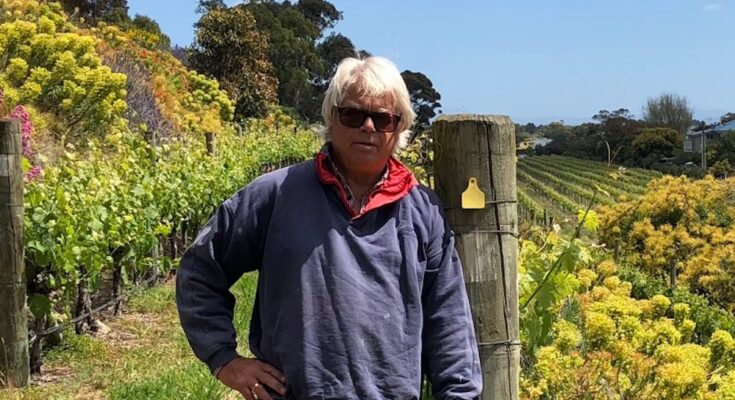
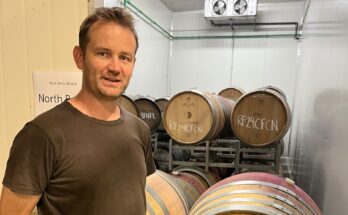


Please! Go for a better layout to read these articles.
Thanks for the feedback. What is it about the layout you dislike? Any constructive suggestions? Thanks